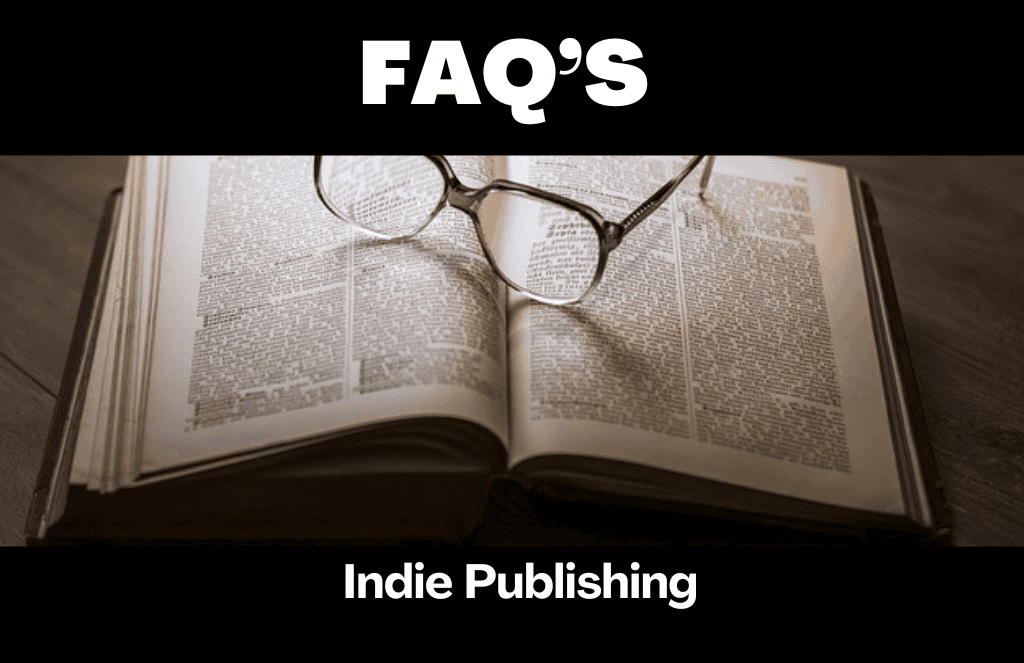Tag Archives for " what is indie publishing "
Indie Publishing

Indie Publishing: Unlock Your Writing Potential
Indie publishing is the process of self-publishing books or other creative works independently. It allows individuals to bypass traditional publishing channels and retain control over their content and distribution.
In today’s digital age, indie publishing has seen a surge in popularity as a viable alternative to traditional publishing. With the rise of platforms like Amazon Kindle Direct Publishing and social media, individuals can now easily and affordably publish their work and reach a global audience.
Indie publishing offers numerous advantages, such as higher royalty rates, creative freedom, and the ability to retain rights to your work. However, it also requires individuals to take on the responsibilities of editing, marketing, and promotion.
Despite the challenges, indie publishing has empowered countless authors and creators to establish their own unique brand and connect directly with readers.
We will explore the world of indie publishing, its benefits and pitfalls, and provide valuable insights and tips for those considering embarking on this entrepreneurial journey. So, if you’re ready to take control of your creative destiny, continue reading to discover the exciting world of indie publishing.
What Is Indie Publishing?
Indie publishing is a form of self-publishing where authors take on the roles of both writer and publisher. Instead of seeking out established publishing houses, indie authors choose to publish their work independently, utilizing various platforms and distribution channels to reach their target audience.
The indie publishing model allows authors to retain creative control, set their own timelines, and keep a larger percentage of the profits compared to traditional publishing deals.
Advantages Of Indie Publishing
Control: Indie publishing grants authors full control over their work, from the writing process to cover design and marketing strategies. This creative freedom empowers authors to bring their artistic vision to life without external interference.
Flexibility: Independent authors have the flexibility to experiment with different genres, writing styles, and formats. They can choose to publish e-books, print-on-demand copies, or audio versions, catering to the preferences of their target readers.
Higher Royalties: One of the major advantages of indie publishing is the potential for higher royalties. By bypassing traditional publishing contracts, authors can earn a larger share of their book sales, providing more substantial financial rewards for their hard work.
Direct Audience Connection: Indie publishing enables authors to establish a direct connection with their readers through various online platforms and social media. This direct interaction allows authors to build a loyal fan base, receive feedback, and create a strong author-reader relationship.
Challenges Of Indie Publishing
- Investment: Indie publishing requires authors to invest their own money in editing, cover design, marketing, and distribution. While this upfront investment can be daunting, it gives authors complete control over the quality and presentation of their work.
- Self-Promotion: Unlike traditional publishing, indie authors bear the responsibility of marketing and promoting their books. This requires authors to be proactive in building an online presence, engaging with readers, and developing effective marketing strategies to ensure their work reaches the desired audience.
- Quality Control: Without the backing of a traditional publishing house, indie authors must ensure the highest quality of their work by investing in professional editing and proofreading services. Maintaining high-quality standards is essential to compete in the saturated indie publishing market.
- Visibility: Standing out in the crowded marketplace can be challenging for indie authors. They must employ effective digital marketing techniques, such as search engine optimization, social media advertising, and book promotion platforms, to increase their visibility and attract potential readers.
Getting Started With Indie Publishing
Indie publishing has revolutionized the way authors bring their stories to the world. In recent years, many aspiring writers have chosen to bypass the traditional publishing route and instead take control of their own destiny by independently publishing their work.
If you’re considering this path, here are three essential steps to get you started on your indie publishing journey.
Writing And Polishing Your Manuscript
Before embarking on your indie publishing adventure, you need to ensure that your manuscript is in top-notch shape. Take the time to write and revise your story, paying attention to its structure, plot, and characters.
Once you’re satisfied with the content, it’s crucial to polish it by fine-tuning your prose, ensuring proper grammar, spelling, and punctuation. This meticulous attention to detail will elevate your manuscript and make it more appealing to readers.
Developing Your Brand As An Indie Author
An important aspect of indie publishing is establishing your brand as an author. Your brand represents your unique voice and style, and it plays a significant role in attracting readership. Start by defining your target audience and brainstorming ways to connect with them.
Develop a compelling author bio that highlights your background, achievements, and writing philosophy. Create an eye-catching author website and social media profiles that reflect your brand. Remember, consistency and authenticity are key to building a strong brand identity.
Building Your Support Network
As an indie author, the journey can sometimes be challenging without a network of support. Building a community of fellow writers, beta readers, editors, and cover designers is vital to your success.
Seek out writing groups, forums, and social media communities where you can connect with like-minded individuals who can provide valuable feedback and guidance. Collaborating with others can lead to valuable insights, new ideas, and even potential partnerships.
Surround yourself with a supportive network that will cheer you on and help you navigate the indie publishing landscape.
Navigating The Indie Publishing Process
Indie publishing offers a unique opportunity for aspiring authors to bring their stories to life and share them with the world. But successfully navigating the indie publishing process can be a daunting task, especially for first-time authors. .
Choosing The Right Publishing Platform
Choosing the right publishing platform is an essential first step in your indie publishing journey. With many options available, select a platform that aligns with your goals and budget. Here are some popular platforms to consider:
| Platform | Features | Pricing |
| Amazon Kindle Direct Publishing (KDP) | Wide reach, user-friendly interface, royalty opportunities | Free to sign up, revenue share on sales |
| Smashwords | Distribution to multiple retailers, formatting tools | Free to sign up, revenue share on sales |
| Draft2Digital | Easy conversion, distribution to major retailers | Free to sign up, revenue share on sales |
Consider your target audience, publishing goals, and the specific services offered by each platform before making your decision.
Formatting And Designing Your Book
Formatting and designing your book is crucial to creating a professional and visually appealing product. Here are some key tips to follow:
- Choose the right font – Select a clean and legible font for your book’s text. Avoid fancy or overly decorative fonts that can distract readers.
- Create an attractive cover – Your book cover is the first impression readers will have, so invest time and effort into designing a compelling cover that encapsulates your story.
- Structure your chapters – Use headings and subheadings to guide readers through your book. Ensure consistent formatting and pay attention to spacing and margins.
- Proofread and edit – Typos and grammar errors can detract from the reading experience. Take the time to thoroughly proofread and edit your manuscript before publishing.
Self-promotion And Marketing Strategies
Once you’ve published your indie book, self-promotion and marketing are essential to reach your target audience and generate sales. Here are some effective strategies to consider:
Establish an online presence – Create an author website or blog to showcase your work and engage with readers. Leverage social media platforms to build a strong online presence and connect with your audience.
Utilize email marketing – Build an email list of interested readers and send regular newsletters with updates, exclusive content, and promotions.
Collaborate with influencers – Reach out to relevant influencers in your genre or niche to collaborate on promotions or guest blogging opportunities.
Attend book events and signings – Participate in local book events, signings, and literary festivals to connect with readers and fellow authors.
Request reviews – Reach out to book bloggers, reviewers, and platforms that accept indie book submissions for potential reviews and exposure.
4. Maximizing Success As An Indie Author
As an indie author, you have the freedom to pursue your creative vision and control every aspect of your publishing journey. However, with independence comes the responsibility of maximizing your potential for success.

Building A Strong Author Platform
A strong author platform is a crucial foundation for indie authors looking to maximize their success. It encompasses various elements that enhance your visibility, credibility, and audience reach. Here are a few key ways to build an effective platform:
- Create a professional author website: A well-designed website serves as your online hub, showcasing your work, providing information about you, and offering a platform for potential readers and industry professionals to connect with you.
- Optimize your website for search engines: Implementing search engine optimization (SEO) techniques on your website will improve its visibility in search engine results. This includes using relevant keywords, creating high-quality content, and having a user-friendly website structure.
- Establish a presence on social media: Choose platforms that align with your target audience’s preferences and engage with them consistently. Share content, interact with readers, and build a community around your writing.
Engaging With Readers
Building a loyal and engaged readership is crucial for indie authors seeking long-term success. Here are some effective strategies to engage with your readers:
Create a newsletter: Offer readers exclusive content, updates about your upcoming releases, and insights into your writing process.
Encourage reader feedback: Actively seek reviews, respond to comments and messages, and show genuine appreciation for their support.
Promote reader interaction: Organize contests, giveaways, or ask thought-provoking questions to spark conversations and make readers feel involved.
Attend book events and signings: Connect with readers face-to-face, sign copies of your book, and participate in panel discussions to forge meaningful connections.
Collaborative Opportunities And Cross-promotion
In the indie publishing world, collaboration and cross-promotion can significantly amplify your exposure and reach new audiences. Consider the following collaborative opportunities:
- Author collaborations: Team up with other indie authors for joint promotions, co-writing projects, or anthologies.
- Guest blogging: Write guest posts for influential book blogs or websites in your genre, exposing your work to their established audience.
- Participate in online communities: Join forums, social media groups, or writing communities to connect with fellow authors and exchange promotional opportunities.
- Strategic partnerships: Collaborate with book clubs, bookstores, or local libraries for events, book recommendations, or book club discussions.
Overcoming Common Challenges In Indie Publishing
Indie publishing can be both rewarding and challenging. While it offers authors the opportunity to bring their work directly to readers, it also requires them to navigate through various obstacles.
Managing Time And Balancing Writing With Promotion
Maintaining a balance between writing and promoting your work is a key challenge faced by indie authors. It can be easy to get caught up in the marketing side of things and neglect the writing process. However, both aspects are crucial for success.
Here are some tips to help you manage your time effectively:
- Create a schedule: Set aside dedicated blocks of time for writing and promotion activities.
- Identify your most productive hours: Determine the time of day when you are most focused and use this time for writing.
- Outsource tasks: Delegate non-writing activities, such as social media management or book cover design, to professionals or freelancers.
- Prioritize tasks: Focus on high-impact promotional activities that yield the best results for your book.
Dealing With Negative Reviews And Rejections
Receiving negative reviews and facing rejections are unavoidable challenges in the indie publishing world. However, it’s important not to let them demotivate you. Constructive criticism can help you improve, and rejection is part of the publishing journey for many authors.
Here are some strategies for dealing with negative reviews and rejections:
Stay positive: Remember that every author receives negative feedback at some point. Focus on the positive reviews and feedback you have received.
Learn from criticism: Analyze constructive criticism and use it to hone your writing skills.
Seek support: Connect with fellow authors or join writing communities where you can share experiences and gain encouragement.
Keep submitting: Don’t let rejections discourage you from submitting your work. Keep trying and exploring new opportunities.
Financial Considerations And Budgeting
Finances play a vital role in the indie publishing process. Authors often have to invest in various aspects of book production and marketing. However, budgeting and financial planning can help you effectively navigate these challenges.
Consider the following tips for financial considerations and budgeting:
| Budget Item | Considerations |
| Editing and Proofreading | Allocate funds for professional editing services to ensure a high-quality final product. |
| Cover Design | Set aside a budget for an eye-catching book cover that grabs readers’ attention. |
| Marketing and Promotion | Plan your marketing strategies and allocate funds for targeted advertising, book signings, or online promotions. |
| Author Website and Online Presence | Invest in creating an author website and maintaining your online presence through social media platforms. |
Frequently Asked Questions On Indie Publishing

How Can Indie Publishing Benefit Authors?
Indie publishing offers numerous benefits to authors, including higher royalty rates, faster publishing timelines, creative control, and the ability to establish direct relationships with readers. It also allows authors to experiment with different genres or niche markets and create a personalized brand for themselves.
What Are Some Popular Indie Publishing Platforms?
There are several popular indie publishing platforms that authors can utilize, such as Amazon Kindle Direct Publishing (KDP), Smashwords, Draft2Digital, and Barnes & Noble Press. These platforms provide authors with easy-to-use tools for formatting, publishing, and distributing their books in both digital and print formats.
How Can Authors Market Their Indie-published Books?
Authors can market their indie-published books through various methods, including building an author website or blog, utilizing social media platforms, participating in book promotion sites, seeking reviews from book bloggers and influencers, attending book fairs or events, and running targeted online advertisements.
Conclusion
Indie publishing offers a plethora of possibilities for aspiring authors to bring their stories to life. With greater control over content, pricing, and marketing strategies, independent publishers can connect directly with their target audience. Through effective SEO techniques and a personalized approach, indie publishers can reach a wider readership, fostering a loyal and engaged community.
Share
